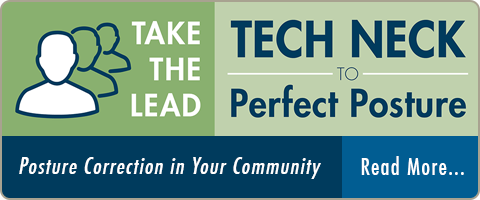When I tell patients that their head and neck pain is related to their smartphone or tablet use, they don’t even blink. “You’re probably right,” they say.
But while rates of smartphone-related conditions have been steadily increasing in the adult population for quite a while, the most dramatic change within the last five years has been in the teenage demographic—middle-schoolers and high-schoolers complaining of pain related to use of smartphones and tablets. This pain can occur as headaches, migraines, neck and upper back pain, TMJ disorders, jaw pain and radiculopathy (shoulder and arm pain and hand numbness).
In public and even in our own office, it’s a common enough sight—parents coming in with children who are using smartphones or tablets as their entertainment of choice. Recent data (Nielsen, 2011) finds that 70 percent of tablet-owning households say that their children use the devices. That number is no doubt higher today, considering the fact that according to the Pew Research Center (January 2014), 58 percent of American adults have a smartphone, 32 percent have an e-reader, and 42 percent own a tablet.
But while parents and patients may recognize that smartphone use is a major contributing factor to this daily pain, they also recognize that this technology is not going away. They recognize too that some sort of intervention is necessary to correct the issue and maintain proper cervical curvature and posture, even as they and their children continue to use the technology. This is where we come in.
Treating “Tech-Neck”
Treatment starts with our standard new patient evaluation process, including neck X-rays (posture analysis can be substituted for X-rays in clinics that don’t use X-ray) in addition to our orthopedic and neurologic exams. Since we know through research what an ideal neck curve should look like, we can mark a patient’s X-ray to show them how far off they are. This visual demonstration makes it much simpler to connect the dots regarding what we’re going to do to fix this problem—namely, through iTrac® Therapy. iTrac® is suitable for use for both adults and children.
Once we have established the need for care, we begin treatment. Typically, in our correction phase of care, we treat patients two to three times a week over the course of four to six weeks (12 treatments total) using the iTrac® therapy, manipulative therapy and posture corrective exercises. Following these initial 12 treatments, we re-evaluate with a post-treatment X-ray. We’re then able to objectively show patients their structural improvements with a side by side comparison of their pre-treatment and post-treatment X-rays. Interestingly and ironically, patients often don’t even have to see this X-ray to know their neck is more properly curved and posture is corrected because they feel so much better by this point in the treatment.
For some patients, 12 treatments are enough to rehabilitate the cervical curve to within normal limits. At this point, we’re able to move them through a transition phase of care, which consists of a tapering visit frequency over a four- to eight-week time frame in order to shift them from the correction phase to the maintenance phase. The maintenance phase includes one to two treatments per month in order to maintain the restored lordotic curve and improved posture. Other patients may need another 12 sessions in the correction phase, and still others may require another 12 after that. However, most patients respond well to a 12- to 24-visit range for the correction phase of care before transitioning to maintenance therapy.
To Market, To Market?
While your clinic will certainly want include “Now offering iTrac® therapy for treatment and prevention of tech-neck” in your marketing materials, this program really requires very little marketing. It’s estimated that 90 percent of the adult population currently suffers from FHP (forward head posture) or “tech-neck”—the point being that these patients are already walking through your door, likely time and time again with the same recurring complaint.
Patients who are already coming to your practice with chronic or recurring pain in the neck, back, shoulders, TMJ and headaches can likely benefit from the addition of iTrac® therapy to the standard treatment protocols they are already receiving. Now is the time to consider offering your patients a higher level of care—rather than being satisfied with functional or symptomatic change alone. iTrac® offers long-lasting symptomatic relief and therefore produces happier patients by creating and maintaining structural change in their spines.


